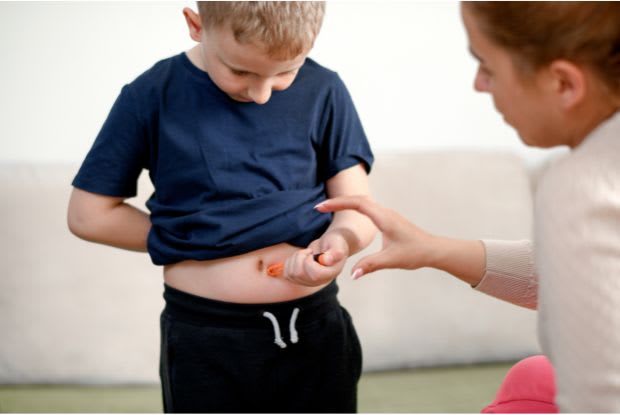Table of Contents
II. Preventing and Managing Type 2 Diabetes in Children
III. Diagnosing Type 2 Diabetes in Children
IV. Treating Type 2 Diabetes in Children
The prevalence of type 2 diabetes in children has been on an alarming rise due to the increasing rates of childhood obesity. As of 2017, over 28,000 children in the U.S. were diagnosed with type 2 diabetes, and if current trends continue, that number is predicted to skyrocket to approximately 220,000 by 2060. [1]
In this article, we’ll discuss how to prevent, manage, diagnose, and treat type 2 diabetes in children.
What is Type 2 Diabetes?
When we eat, our digestive system breaks down carbohydrates into simple sugars, with glucose being the primary energy source for our cells. To fuel these cells, glucose must leave the bloodstream and enter the cells. [2]
Insulin, a hormone produced by the pancreas, plays a crucial role in this process. As it travels through the blood, insulin signals the cells to take up glucose. When blood glucose levels rise, such as after a meal, the pancreas produces more insulin to facilitate the movement of glucose into the cells. [2]
However, in individuals with type 2 diabetes, there are two main problems at play: insulin resistance and insufficient insulin production.
- Insulin resistance occurs when the cells in our body do not respond properly to insulin. Normally, insulin acts like a key, unlocking the cells to allow glucose to enter and provide energy. However, with insulin resistance, this key no longer works effectively. As a result, glucose builds up outside the cells, leading to high blood sugar levels.
- Insufficient insulin production: The pancreas works harder to produce more insulin to compensate for insulin resistance. Initially, this helps regulate glucose levels. However, over time, the pancreas becomes overwhelmed and unable to produce enough insulin to meet the body's needs, leading to insufficient insulin production. [2]
The combination of insulin resistance and insufficient insulin production results in persistently high blood sugar levels, which is the hallmark of type 2 diabetes. [2]
Preventing and Managing Type 2 Diabetes in Children
Type 2 diabetes was once rare in children, which is why it was previously called adult-onset diabetes. However, with rising rates of childhood obesity, more and more children are being diagnosed with type 2 diabetes, some as early as age 10. [3] The good news is that parents and guardians can take steps to help prevent type 2 diabetes in kids and properly manage it if diagnosed. Preventing type 2 diabetes requires establishing new healthy habits as a family. When everyone participates, healthy changes become the new normal. Here are some easy tips to implement: To diagnose type 2 diabetes, doctors will first ask about any symptoms the child is experiencing. Type 2 diabetes can cause the following symptoms in children: In addition to asking about symptoms, doctors will conduct blood and urine tests to check glucose levels. For an accurate diagnosis, doctors may repeat these tests on separate occasions. Type 2 diabetes treatment in children generally follows the same guidelines as for adults, focusing on diet, exercise, and lifestyle changes. However, there are some important differences to consider when managing this condition in young patients. Treating type 2 diabetes in children requires close monitoring and management, with age-appropriate education and support from parents, caregivers, and healthcare providers. Maintaining blood glucose control while allowing for normal childhood development and activities requires a thoughtful, team-based approach. To learn more about diabetes, visit our diabetes blog. The content in this article is intended for informational purposes only. This website does not provide medical advice. In all circumstances, you should always seek the advice of your physician and/or other qualified health professionals(s) for drug, medical condition, or treatment advice. The content provided on this website is not a substitute for professional medical advice, diagnosis, or treatment.
Diagnosing Type 2 Diabetes in Children
Treating Type 2 Diabetes in Children

Conclusion
